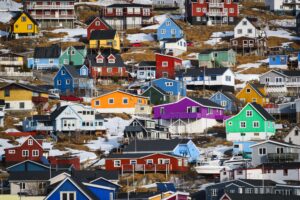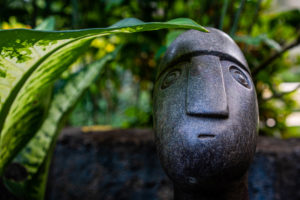Support Hidden Compass
We stand for journalism, science, history, and hope. Make a contribution to Hidden Compass and stand with us.
This story has been published in the 2023 Pathfinder Issue of Hidden Compass. While every story has a single byline, the issue is a collaborative effort. Storyteller proceeds from all patronage campaigns in this issue will go collectively to Team Tété on top of their article pay.
Sometime in the early 2000s, a boy named Jaaku Sørensen walked across a fjord in the Nuuk area, the sharp cold air on his face, snow crunching beneath his boots. Amidst the white expanse, absent the primary-colored buildings of the town, perhaps he could not distinguish between where land ended and the sea began. He didn’t need to make the distinction. The path was solid beneath his feet the entire way.
~~
As the plane ascends from Kangerlussuaq, my expedition teammates and I can see the coastal mountains disappear beneath the Greenland ice cap to the east — that domed, infinite mass — which formed tens of millions of years ago and today is the second biggest ice sheet after Antarctica. In his book, Togo-born explorer Tété-Michel Kpomassie said it wasn’t known what lay beneath the Greenland ice cap: contiguous land or an archipelago? We now know it’s not the latter but, rather, a series of what must be stunning, ice-carved canyons. But even though humans can trace Greenland’s topography, the land beneath that sheet is more mysterious and impenetrable than an ocean trench.
If it were to melt completely, the ice sheet contains enough water to raise world sea levels by more than seven meters. The sheet’s mass has declined markedly, by some 270 billion metric tons of ice annually since 2002 according to satellite data. The rise in global temperatures has accelerated surface melting and iceberg calving. Even the current decline is having an impact.
All is quiet except for the sound of the engine, the water rippling past the bow, and the jolts as the vessel’s port side occasionally bashes against the ice.
~~
We can see that impact from the boat we board in Ilulissat on Greenland’s west coast. As we cruise through the waters of Disko Bay beneath a strong sun, a few white birds soaring overhead, ice rises from the sea, shiny, metallic, ghostly, silent.
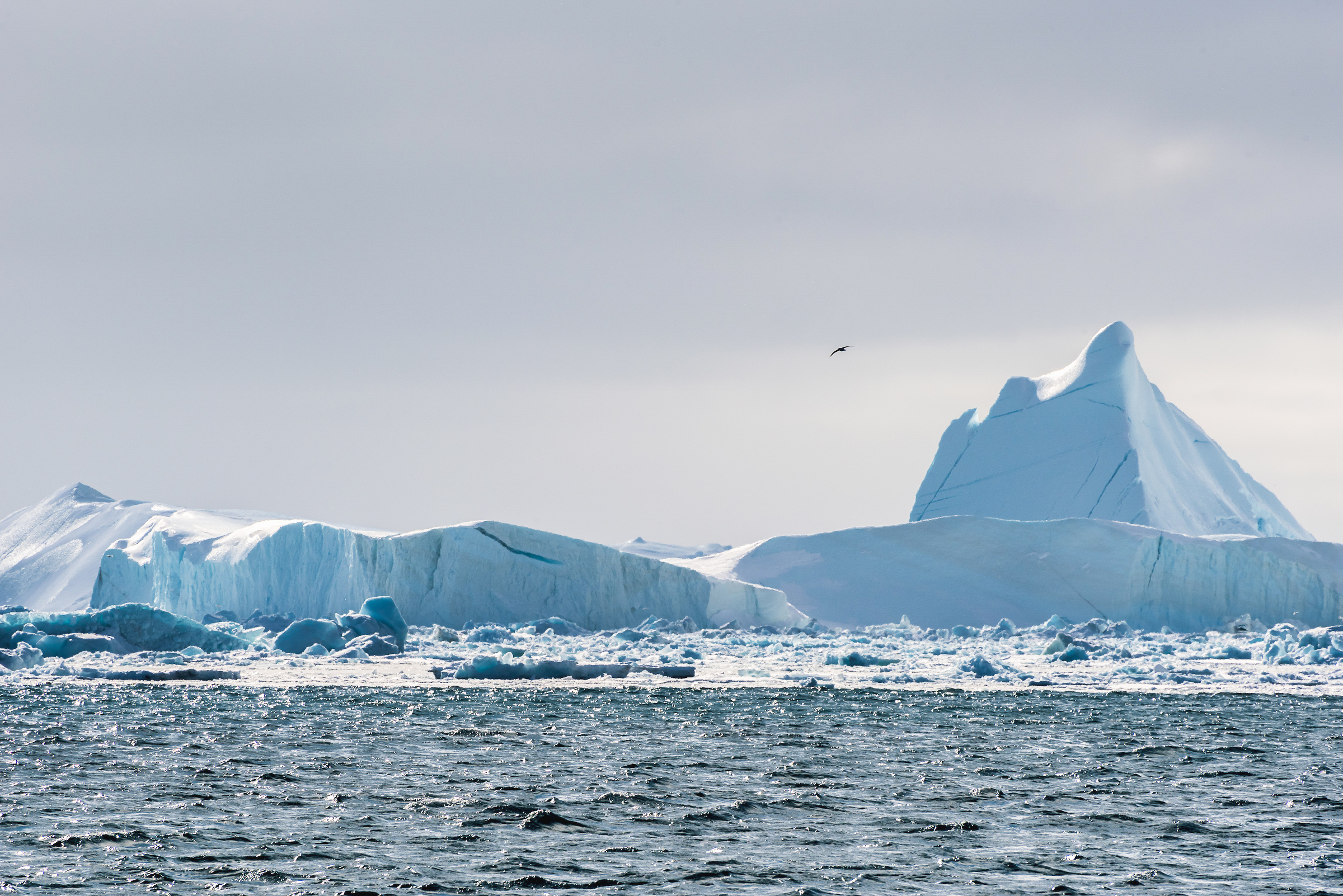
When he first arrived in Greenland, Togo-born explorer Tété-Michel Kpomassie wondered what lay beyond its icy landscape. More than half a century later, the 2023 Pathfinder expeditioners wonder the same as they follow in his footsteps. Photo: Lola Akinmade Åkerström.
Glaciers like the Jakobshavn Glacier, the region’s most famous, are moving faster than ever before, calving gigantic chunks of ice the size of large buildings. The implications are wide ranging, including a decline in fish stocks and shrinking habitat for polar bears, which need the sea ice in order to rear their young and hunt. Analysis of ice conditions in the territory of the 19 recognized subpopulations of polar bears found that over the past three decades, sea ice season has shortened by nearly two months.
Greenlanders will bear the immediate brunt of these changes. More than most people in the northern hemisphere, they rely on nature. Because the ice cap leaves only a fringe of narrow, dendritic peninsulas for humans to live on, large-scale farming is impossible. As a result, supermarket meat is expensive. It’s why hunter-gatherer culture is still strong, and gives Greenlanders an immediate and crucial connection to the land.
As someone from the oil-rich Niger Delta in Nigeria, I appreciate the existential threat posed by a changing natural environment. Like Greenlanders, we suffer the effects of carbon emissions and face immediate danger when sea levels rise.
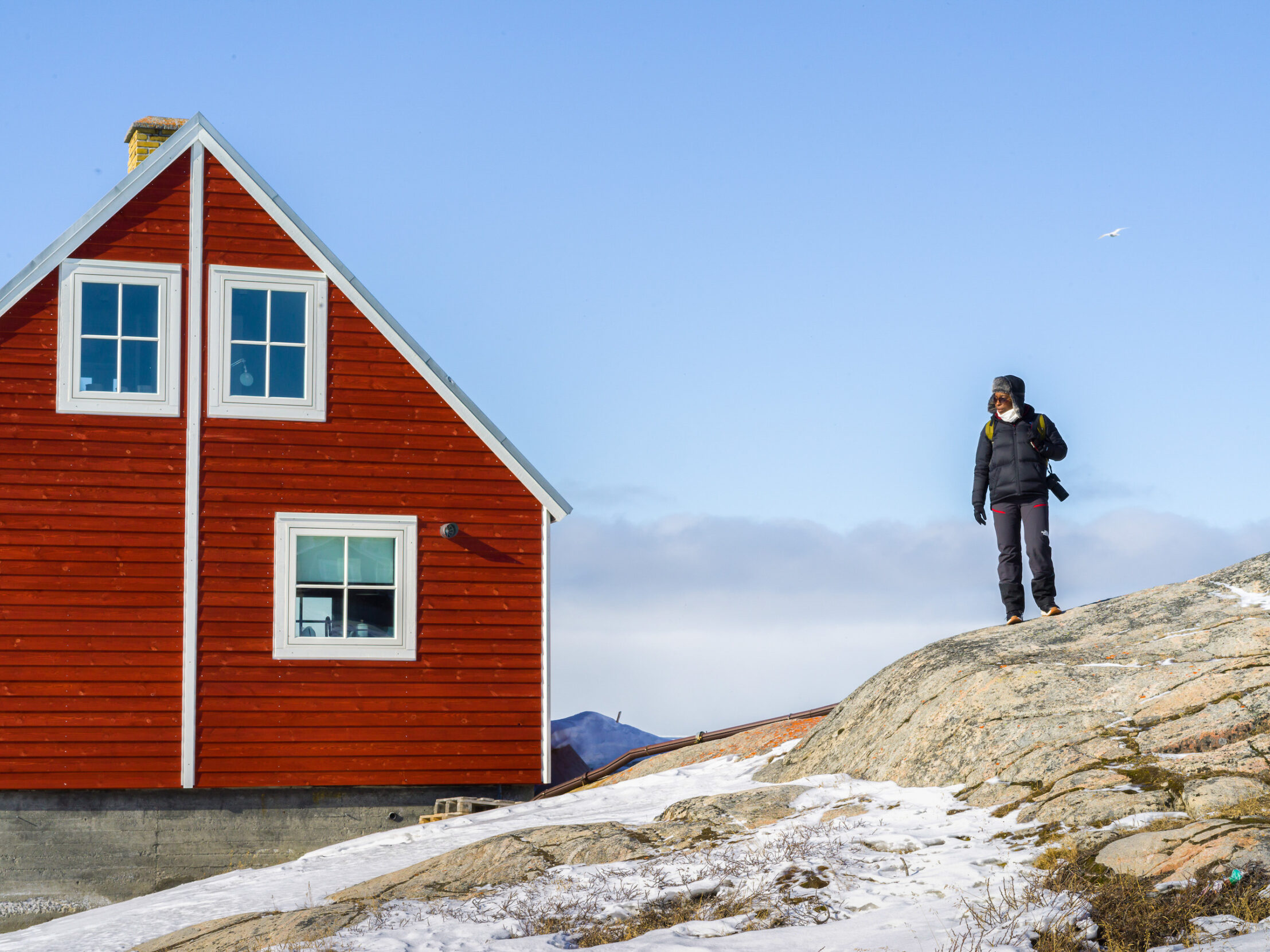
Nigerian-born journalist and Pathfinder Noo Saro-Wiwa explores Ilulissat, and the ways climate change is affecting Greenland as a whole. Photo: Lola Akinmade Åkerström.
Greenland faces a similar fate to the Niger Delta now that the melting ice has, through cruel irony, revealed mineral, oil, and gas reserves on the island, which raises the specter of increased resource extraction and the contentious politics that brings. People of the Niger Delta have watched our natural resources extracted at our expense for the financial gain of others. Greenlanders already experience something similar in their fishing industry. The politician Erik Jensen complains about the Danes catching Greenlandic cod and then selling it for profit in Denmark. But will this even be an issue if fish stocks continue declining?
~~
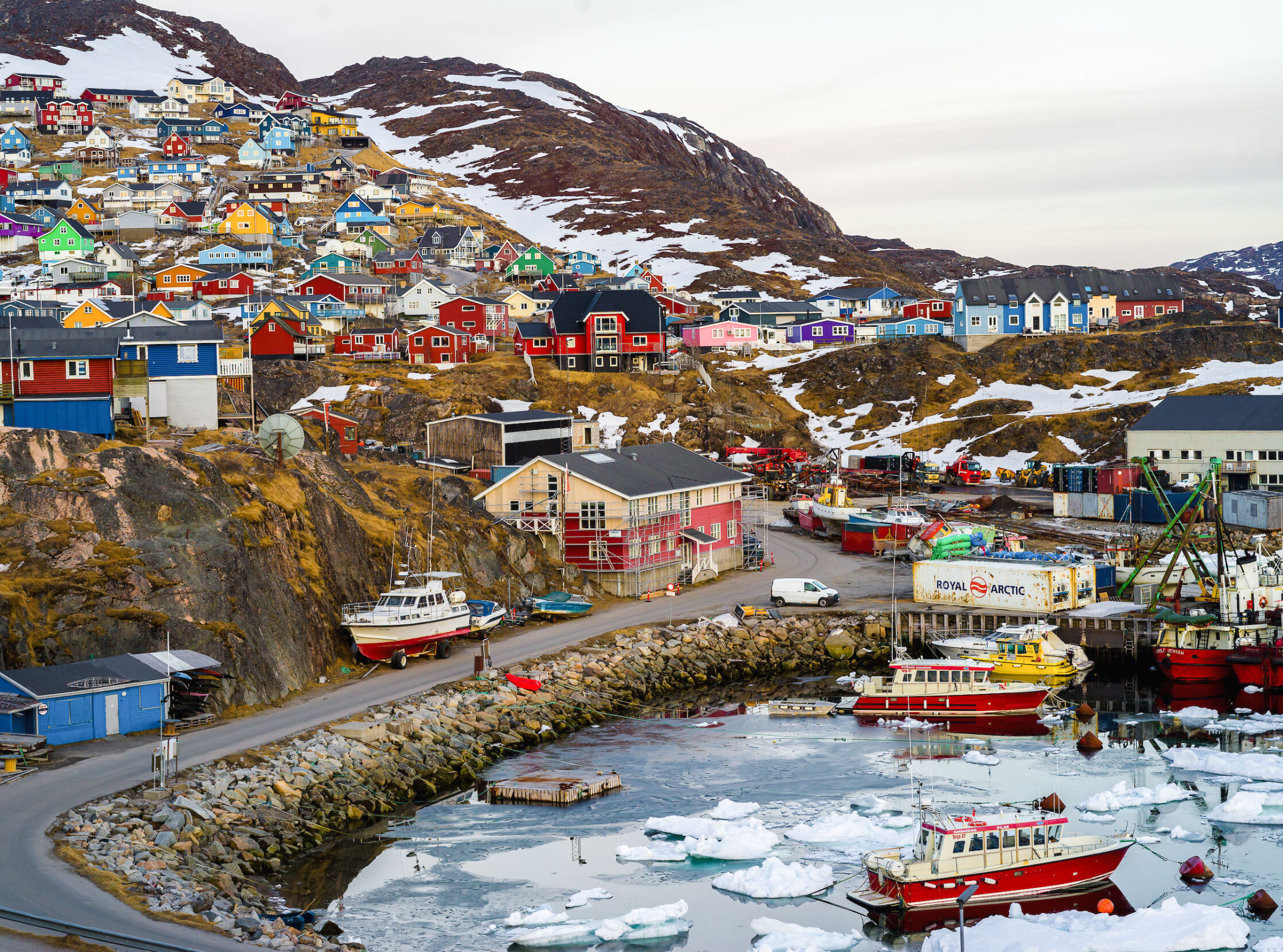
Pack ice fills the coastal waters of Qaqortoq. Greenland is already feeling the effects of climate change, which is impacting the everyday lives of its inhabitants — from Indigenous hunters to polar bears. Photo: Lola Akinmade Åkerström.
At the fishing port in the southern Greenland town of Qaqortoq, we meet Jens Pieter Kielsen, a local fisherman. He is about 60 years old with a graying mustache. I initially thought he was full Danish, but he is actually of Danish and Inuit heritage.
Standing in his small fishing boat near the jetty, Kielsen invites us to join him for a brief ride around the port. After he lays down waterproof clothing on the wet seats for us, we motor away. With the briney marine air freezing our faces, the boat zig-zags among the bergy bits and growlers and blocks of sea ice dotting the water. All is quiet except for the sound of the engine, the water rippling past the bow, and the jolts as the vessel’s port side occasionally bashes against the ice when we squeeze through narrow channels.
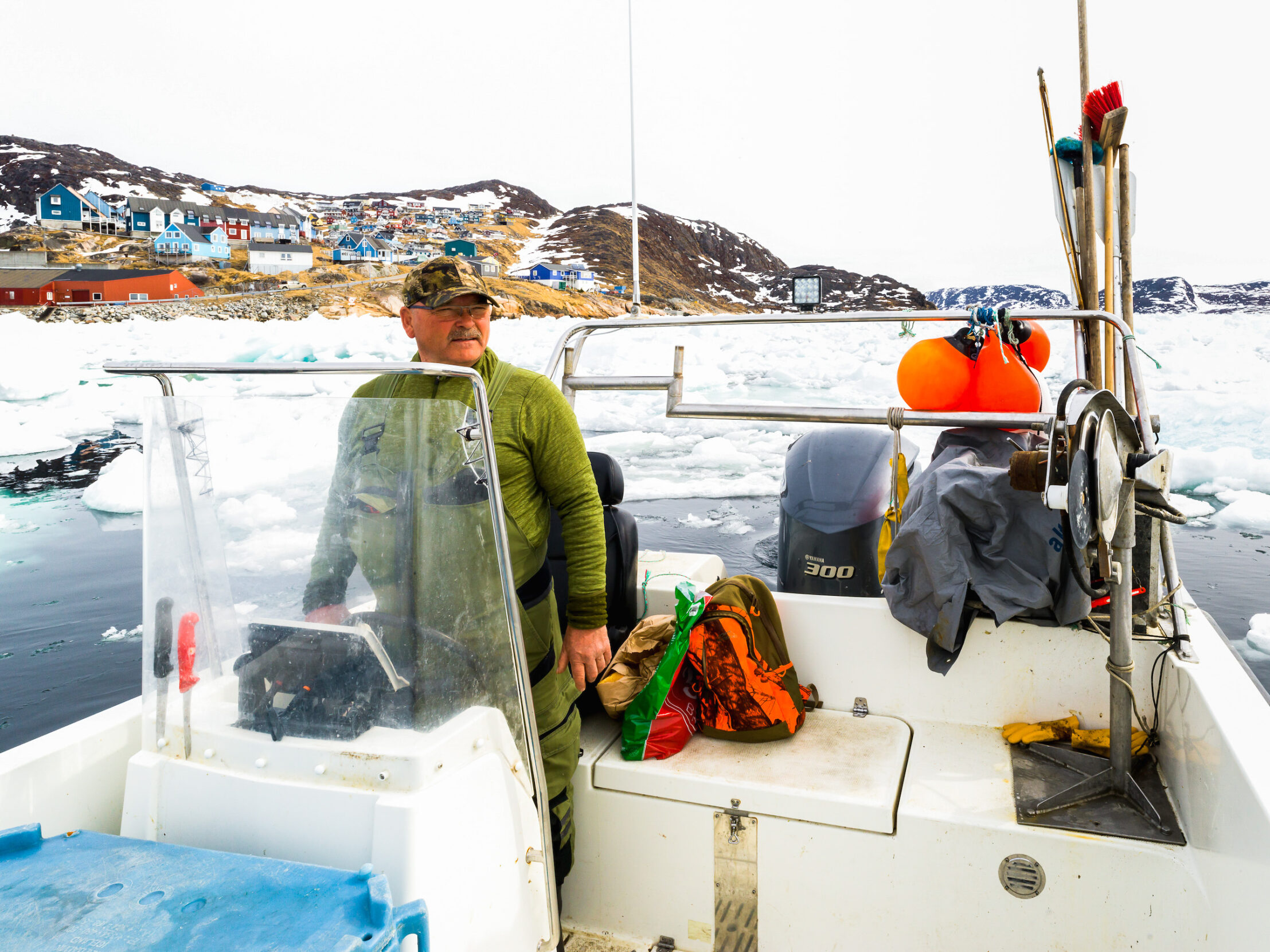
Greenlandic fisherman Jens Pieter Kielsen on his boat in Qaqortoq. Photo: Lola Akinmade Åkerström.
Although it is the season for catching stenbit (lumpfish), pack ice in the bay prevents the fishermen from going out and making their daily catch. On a table close to the jetty, just a few fresh-caught lumpfish are on display. I can count them on my fingers.
As someone from the oil-rich Niger Delta in Nigeria, I appreciate the existential threat posed by a changing natural environment.
Kielsen is also a hunter. Back on land, he shows us his hunting rifles, which he stores in a shed by the port. He hunts seals, walruses, sea birds, reindeer, and musk ox, and leads hunting tours for visitors. He taught his children to shoot and is teaching his grandchildren as well.
Hunting is deeply rooted in the lives of Greenlanders. In the 1960s, however, Tété believed Qaqortoq was insufficiently hunting-oriented. Disillusioned by its residents’ modern lifestyle, he wrote: “… apart from two kayaks, there were no seal hunters left in Kakortoq, not a single sledge, not a husky. And not one single igloo!” He complained that people appeared to live on handouts from the Danish government.
Tété visited a Greenland that wasn’t as modernized as it is today. He also happened to be born in an era when his Togolese village had retained far more of its cultural traditions than the Nigeria I was born into one generation later. That difference means that rather than lamenting the traditions lost, I admire the ones that remain: I am pleasantly surprised by Greenlanders’ retention and assertion of their traditional culture. So many of them, women and girls included, still provide for themselves and their families by hunting animals such as walrus and polar bears — albeit with modern rifles.

Unusual amounts of sea ice can prevent fishermen from heading out to catch stenbit, or lumpfish, such as those pictured here. Photo: Lola Akinmade Åkerström.
~~
We meet one such woman in the western town of Sisimiut: Kimmernaq Heilmann, a 35-year-old adventure guide. Curvy figure, 5’5”, shoulder-length curly hair framing her oval, high-cheek-boned Greenlandic face and dark eyes. Heilmann fishes, hunts seals, porpoises, and caribou, and can skin and prepare what she kills.
Seals, she says, must be the right size to be shot. “If they’re too big you can’t drag them onto boats,” she tells us. So, Heilmann assesses their size before pulling the trigger. But some hunters now assess the size of their catch for more shallow reasons: The bigger specimens — which normally aren’t considered suitable for eating — are being shot for bragging rights on social media.
For Heilmann and her friends, climate change is affecting their hunting in ways that also surprise me. The caribou population is growing, she told us, because the melting ice expands the animals’ grazing territory. The landscape and environment are shifting and changing. The nimble hunting lifestyle is adapted to it, yet humans are also chained by modern living, often unable or unwilling to respond to such changes.
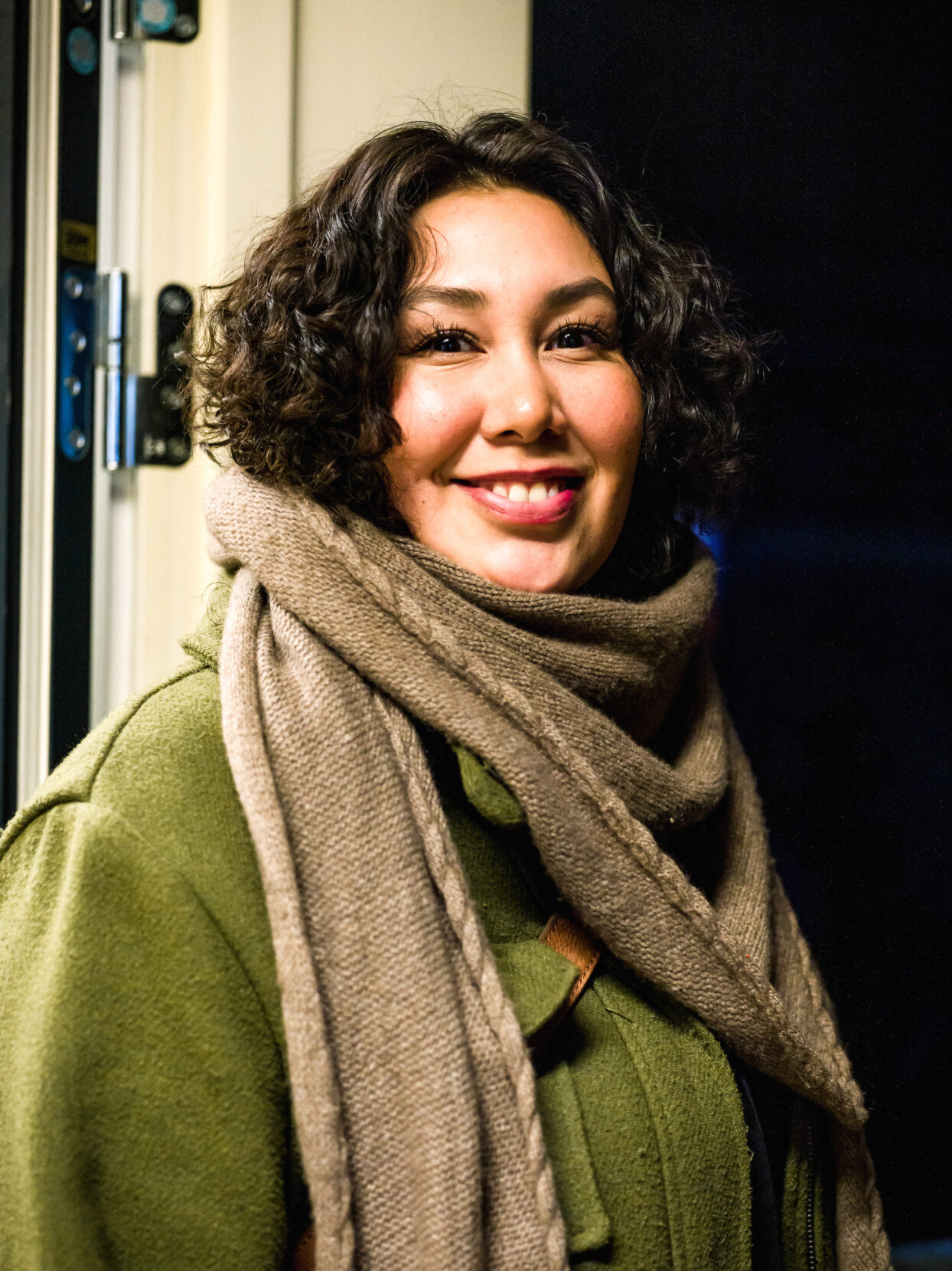
Kimmernaq Heilmann embraces Greenlandic tradition by fishing, and hunting seals, porpoise, and caribou. Photo: Lola Akinmade Åkerström.
~~
To some extent, Greenlanders have the capacity to adapt to the shifting physical and ecological landscapes brought on by climate change, but the changes ahead are unprecedented in modern human experience. They are also occurring in an era when Greenlanders are not as mobile as their hunter-gatherer ancestors. Changing their lifestyle requires huge effort and commitment, not only from themselves but from their governments and from governments around the world.
~~
Perhaps he could not distinguish between where land ended and the sea began.
We spend a few days in the western town of Sisimiut, which is buzzing with the Arctic Sounds Festival. Bands from countries across these latitudes have gathered for one week to play to a crowd mostly made up of students. At one point, I’m hooked by a jazz-style song that the artist later describes as a “modern Frank Sinatra” tune. It’s called “Someone Peed the Pool,” and it is performed by a 28-year-old music school teacher from Nuuk named Jaaku Sørensen.
“The song is about climate change,” he tells me afterward. “We’re all in this pool, and we know someone peed in it. But we’re not doing anything about it.”
Sørensen was the boy who once spent his winters walking across a fjord. “Now, twenty years later, I can’t do that,” he says. “And it has huge ramifications for wildlife, for how we fish, for how we hunt, and what we can fish and what we can hunt. And that’s our traditional lifestyle as hunter-gatherers and fishermen. So we see the effects very, very clearly. And then we see some people from the United States that are climate-change deniers … we’re living in the proof that they’re looking for.”
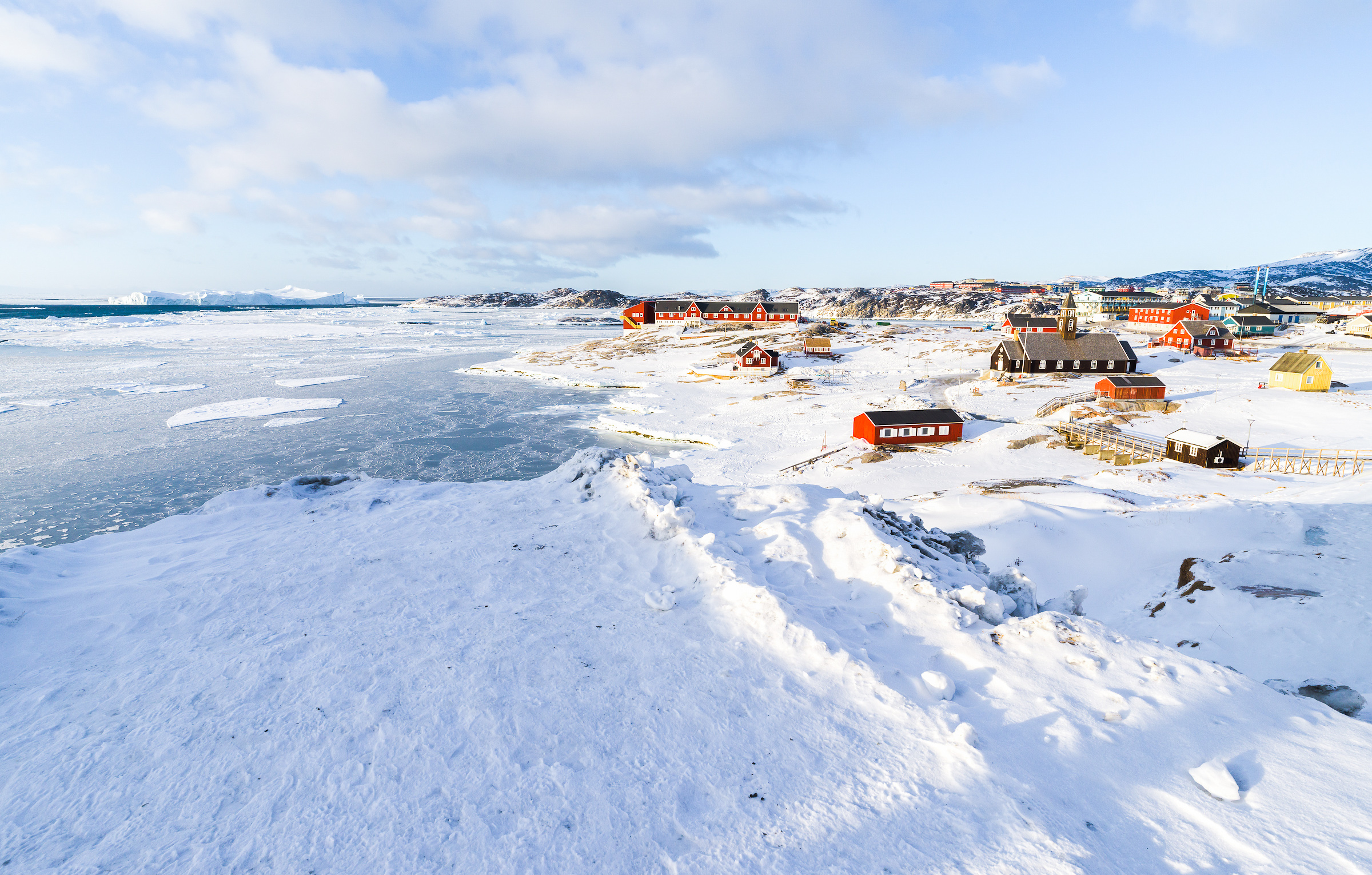
The landscapes of Greenland — like those of Ilulissat, pictured here — are changing dramatically within a single human lifespan. As a boy, Jaaku Sørensen was able to walk across an icy fjord near the capital of Nuuk. It’s a walk he can no longer take. Sørensen is still in his twenties: He faces decades of change to come. Photo: Lola Akinmade Åkerström.
Noo Saro-Wiwa
Noo Saro-Wiwa is the Pathfinder Prize-winning visual storyteller and journalist for “In Tété’s Footsteps: A Cultural Expedition in Greenland.”
Never miss a story
Subscribe for new issue alerts.
By submitting this form, you consent to receive updates from Hidden Compass regarding new issues and other ongoing promotions such as workshop opportunities. Please refer to our Privacy Policy for more information.

